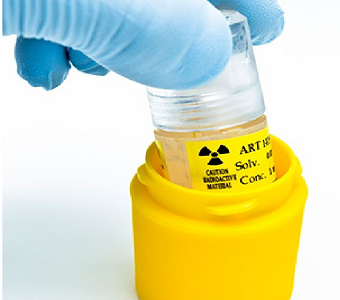- As outlined in our early April report, owning AMRI is a bet on management’s ability to execute on an aggressive plan to grow revenues from $250M in the TTM to nearly $1.5B by 2019. We like the bet.
Albany Molecular Research (AMRI) reported 1Q14 results before the bell on Tuesday, increasing revenue and EPS guidance for 2014 on top of a slight revenue and EPS miss. The guidance increase supports our early-innings thesis (read it here) that the company can grow operations multifold under the leadership of industry veteran Bill Marth.
1Q14 Quarter in Summary
Albany’s revenues for the quarter were flat sequentially at $59.3M, while adjusted net income declined 29% to $5.1M, or $0.16 per fully diluted share. The largest impact on the bottom line was a result of declining royalties, primarily from Allegra sales, that fell 36% to $8.3M from the same quarter in 2013
Taking a more granular look across Albany operations, its large scale manufacturing business (53% of 1Q14 revenues) continues to operate well, with revenues increasing 19% and gross margins approaching 20%. Balance sheet liquidity remains strong, and the company ended the quarter with $171M in cash. We estimate cash balances now stand closer to $131M following the April acquisition of Cedarburg Pharmaceuticals.
The Pros
Albany’s “growth by acquisition” strategy is gaining steam, and the company upped its annual revenue and EPS guidance as a result. We view this as supportive that the team will be able to source, purchase, and integrate high-margin targets in a manner that increases shareholder value.
The company upped 2014 revenue guidance (ex-Allegra royalties) from a range of $231-$240M to $243m-$253M, while also increasing adjusted EPS guidance from a range of $0.72-$0.80 to $0.78-$0.84. Revenues and synergies from the Cedarburg acquisition, the closing of its Syracuse facility, and better capacity utilization at the Burlington facility after a clean FDA inspection (previous inspection halted operations), will result in a large bump in contract gross margins. Albany is guiding for 24% contract gross margins, a level the company hasn’t attained since 2008, up from 18% in 2013.
Elevated profitability bodes well for Albany’s acquisition strategy and bottom line margins since the company will likely tap debt markets for future deals. With remaining balance sheet optionality, $131M in cash, and positive cash flow guidance of $33-$37M, Albany will likely be able to fund 2-3 similar tuck-ins like Cedarburg with cash before leveraging up (debt is still cheap) for subsequent transactions.
The Cons
Allegra royalties are declining faster than anticipated, pressuring profitability but underscoring the importance of Albany’s strategy to diversify and be profitable ex-royalties. Royalty guidance came in at $25M for 2014, down 32% from results in 2013.
Also, Albany shares are range-bound, trading in-line with levels before the mid-March outlining of Albany’s strategy to grow revenue over 3-5 years. Existing operations provide negligible excitement to drive share prices in the near-term and Albany’s drug discovery/small-scale contract manufacturing operations (33% of 1Q14 revenues) are mostly range-bound as well at $19.5M in revenues, down 3% quarter over quarter. Shares are very much beholden to acquisition newsflow, as evidenced by the 28% rally in mid-March after management outlined its aggressive new plan.
The Pipeline: Not Drugs, But Acquisitions
We are encouraged that Albany has sufficient cash generation and optionality to remain an active acquirer. Fortunately, Marth is a prudent capital allocator. As a reminder, Albany’s strategy is to purchase higher margin, niche private companies or subsidiaries of public companies in an attempt to circumvent the public auction process and pay lower multiples (Albany paid ~3x sales for the private company Cedarburg).
We expect to see 2-3 acquisitions/year for niche API and contract manufacturing businesses, and Marth has commented that his pipeline is full of candidates. The company even discussed weakness for drug discovery assets in phase 3 development (23 compounds currently, versus 56 compounds in phase 1/2) and may look to purchase a facility with related capabilities. Europe is also a focus as the company has a minimal presence across the pond.
Final Thoughts
Management has relayed a consistent message to investors about its strategy, which is taking shape with the first acquisition of a private, controlled-substance API business at a prudent multiple. While not a sexy biotech story, initial signs point to successful execution – and a share price that will follow over the longrun. We note that the strategy is enticing enough that sell-siders are taking notice, including analysts from Morgan Stanley and JP Morgan that were queued up for Q&A on Albany’s conference call this morning and not participants previously in 4Q13. Although AMRI is gaining traction institutionally, additional sell-side coverage will bring the Albany Molecular story to a broader audience and provide an incremental catalyst to drive shares higher, particularly if/when the company taps the debt markets.




